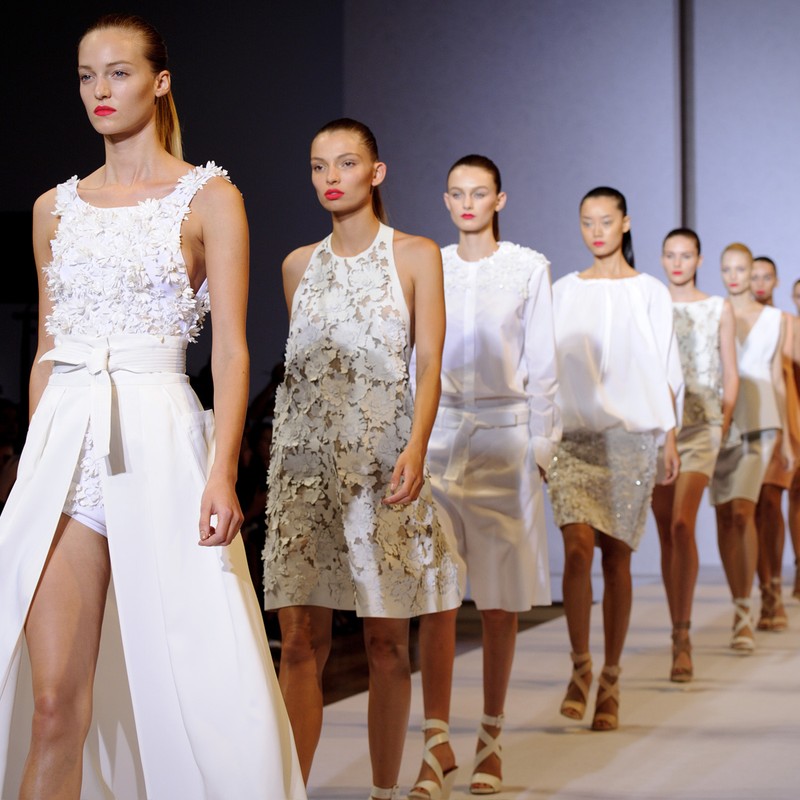
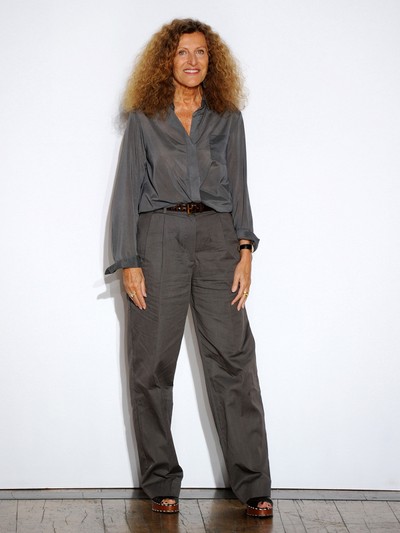
The Gold Edition Meets… Nicole Farhi
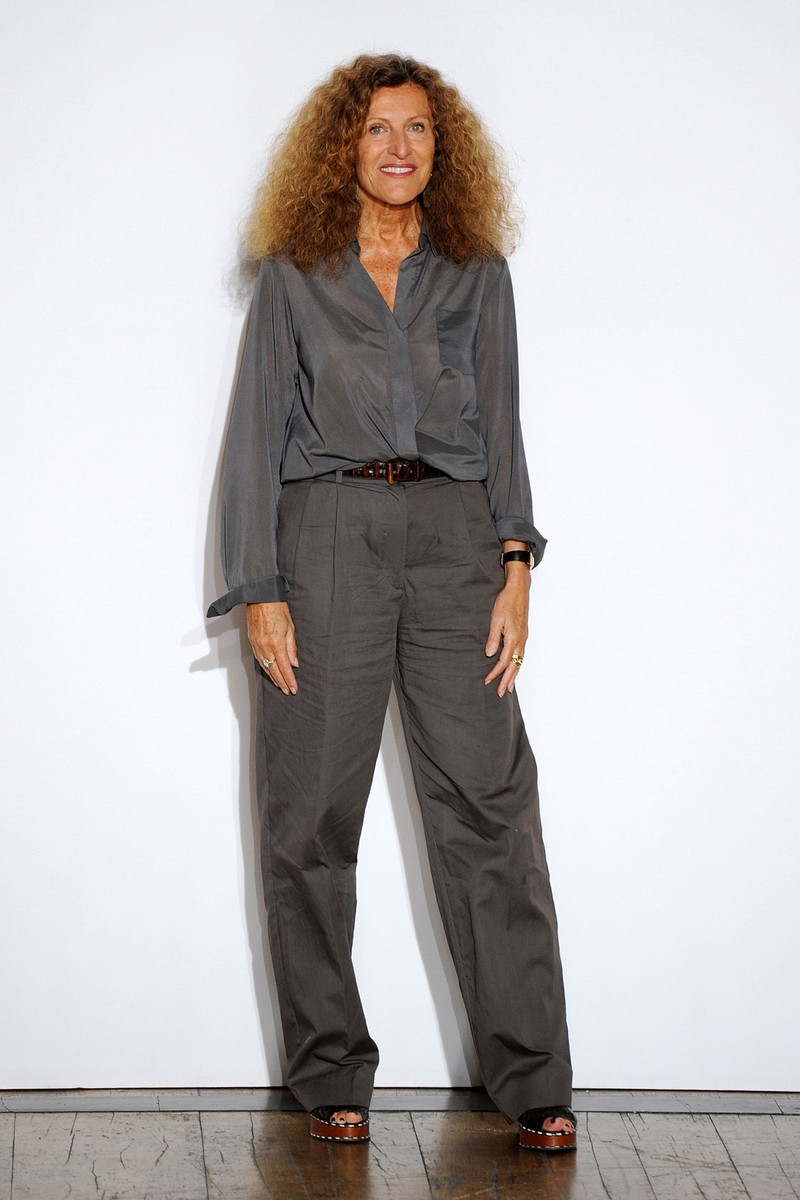
I was born in the south of France to a family that was Turkish/Jewish on both sides. My childhood was wonderful – I was lucky to grow up in a wonderful, loving and colourful family. They had escaped the war by hiding in a farm and were full of hope for the future. I was particularly fascinated by my father’s sister who came to visit us from Turkey once a year. She was very beautiful and extremely well dressed. I couldn’t wait to see what was new in her wardrobe every time she arrived.
By the time I was 14 or 15, I was going to Paris every summer to see my aunt Visa. She would take me to see the couture collections – Cristóbal Balenciaga was her favourite couturier. I loved Paris and decided I wanted to live there. At 18, I went to study fashion and art in Paris. Le Cours Berçot (now Studio Berçot) was renowned for being one of the best schools.
I started working as a freelance designer 18 months later. I’d met Stephen Marks through one of my clients – Pierre d’Alby – and we started a relationship. This was the early 70s and London was buzzing. It was such exciting time, and I was visiting Stephen at weekends while carrying on with my freelance work in Paris and Italy. Stephen had started a company called French Connection and, very quickly, I was designing the collections in India and China.
Working for and with Stephen was the best thing that happened to me. I was given total freedom to design the collections but, after I returned to London with a collection of 300 pieces, Stephen would have to cut the collection back to a manageable size. I tended to over-do it sometimes! We would have rows over it, but obviously he was right. Stephen was a great editor; he had a real sense of what young people wanted to wear and we became a very successful company. I loved seeing my clothes being worn by so many people, but my real pleasure was going to India – a country where I made friends for life.
Stephen had another company when I met him called Stephen Marks. I started designing his label at the same time as designing French Connection and it eventually became Nicole Farhi for Stephen Marks. When we were asked to open our first shop within Harvey Nichols, we decided to remove his name from the label. This was the early 80s and I felt my much greater responsibility towards my own collection than French Connection. I wanted to design clothes I would be proud to wear – they had to be in beautiful fabrics, great colours and always with that ‘je ne sais quoi’. This is probably my definition of personal style. My own style hasn’t changed much over the years and, whether it was menswear or womenswear, I always designed with the same quality, wearability and attention to detail in mind.
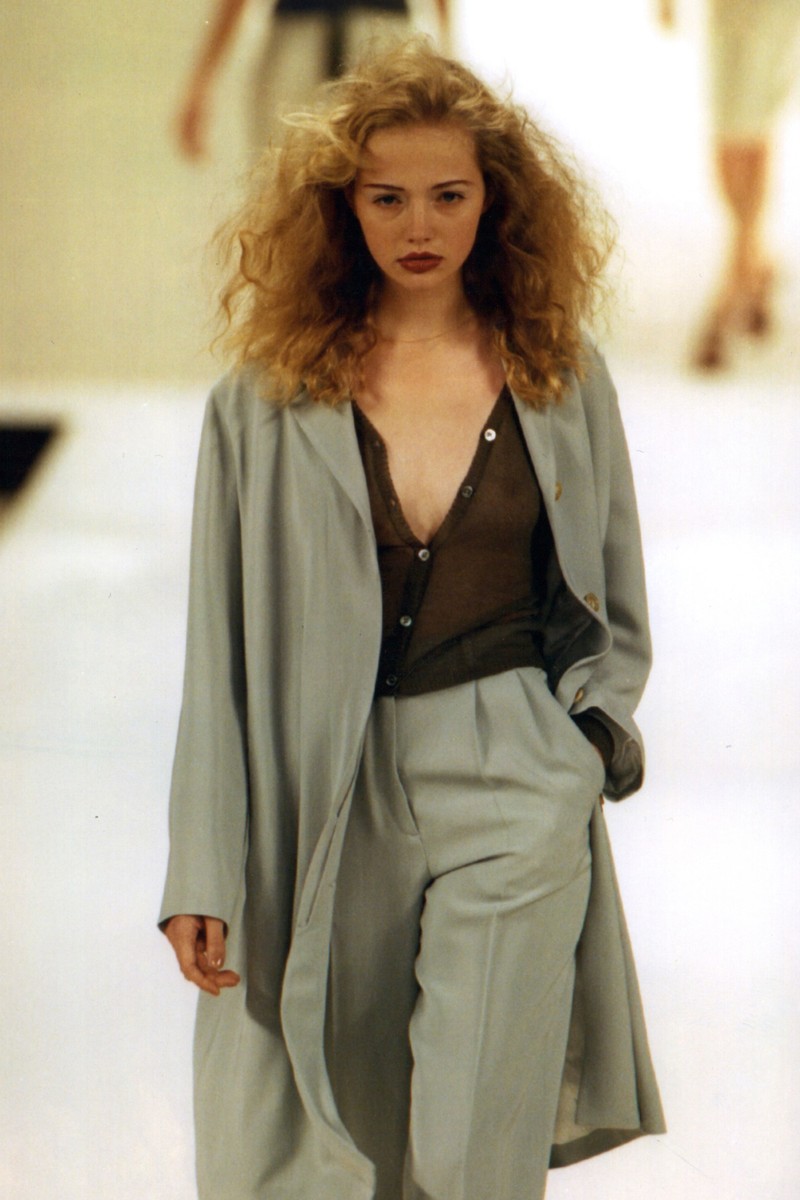
Stephen and I had a daughter, Candice. Were we good parents but did we give her enough time in the early days? I can’t say – only she could probably answer that. We both worked so much, so looking back we probably missed a lot of her younger years, but she has turned out to be a wonderful, kind, clever beautiful young woman, so I don’t think we’ve done too badly.
In 1991 I met [playwright] David [Hare]. He is my ideal partner. I love his kindness, his openness to others, his intellect and he enriches my life daily. David is the first person to look at my work and I am the first reader of his. I like what he does and he always encourages me to keep working. Although he loved my fashion – he still wears his old NF clothes – he also supported me when I switched from fashion to sculpture.
Nicole Farhi, the company, was sold in 2010. I didn’t enjoy my last two years there and, after my last show in September 2012, I was able to go to my sculpture studio every morning and have kept going there ever since. A friend of mine looked at the sculptures I’d done over the years and introduced me to the Bowman Sculpture gallery.
About 18 months later in 2014, I put on my first show From The Neck Up. I’ve been sculpting since the 80s – always stealing time from my fashion work, going to evening classes by Jean Gibson, and I was also lucky to meet Eduardo Paolozzi while casting my first bronze in 1985. Eduardo became my friend and my mentor; he believed in me from the start, so I never want to disappoint him.
/https%3A%2F%2Fsheerluxe.com%2Fsites%2Fsheerluxe%2Ffiles%2Farticles%2F2024%2F03%2Fnicole-farhi-image-7.jpg?itok=EoudzPAw)
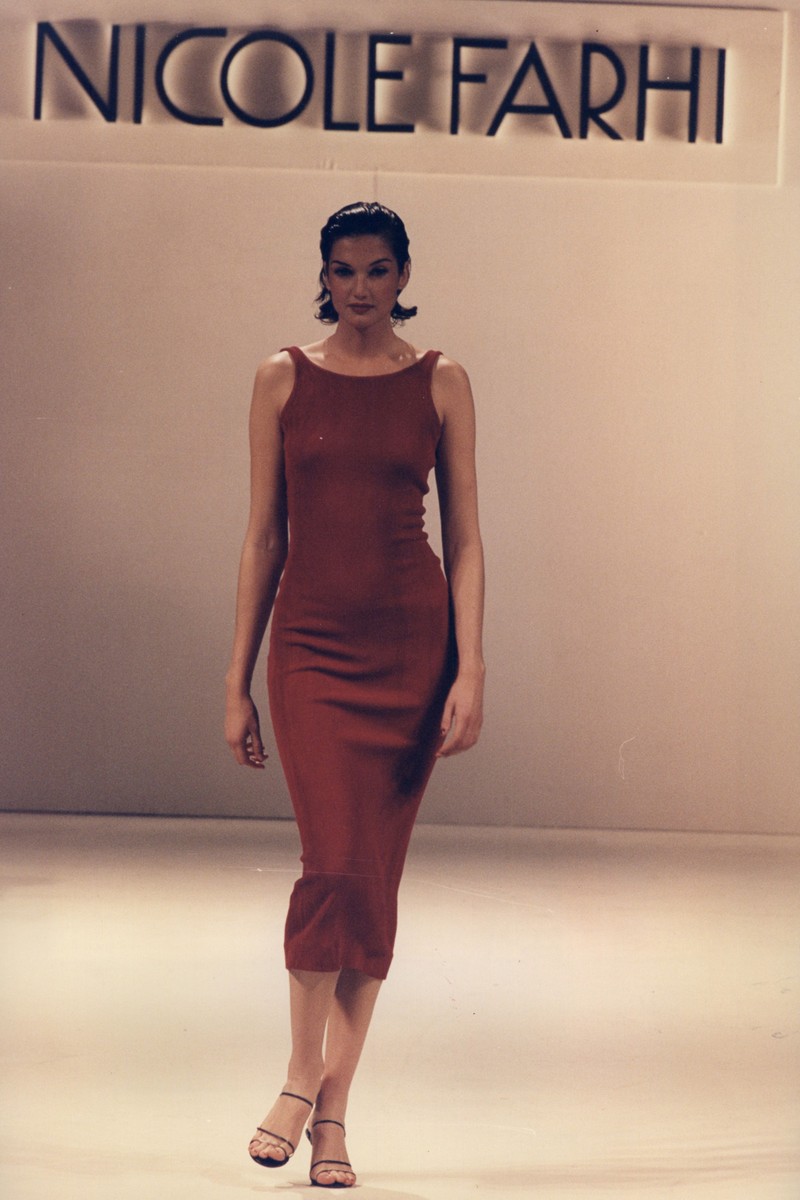
I could probably have achieved more by starting my sculpting career earlier. But I do not have time to waste in regrets. I had a wonderful career as a fashion designer. I started in the late 60s when everything was open to young designers with ideas. It was so much easier back then to start your own company – people were ready for clothes with a difference.
My first two sculptures – which were made almost 40 years ago – were a bust of a woman and a portrait of a male friend. They were the start of an enduring theme in my work. I’ve always been interested in the way Rodin treated the naked body by introducing the fragment. I believe a torso can be sometimes more expressive than a full body. Therefore, all my work, until now, has been more telling by being only about isolated parts.
From The Neck Up was really about portraiture. Making portraits is something I go back to all the time because it keeps you in touch with humanity. My second show The Human Hand looked at how hands – as opposed to the face – are the most expressive part of the body. I made a list of people and their professions, and sculpted hands that work for a living – pianists, dancers, bakers, conductors…
The exhibition that followed, Folds, was about the beauty of large women – the tenderness and sensuality of the flesh. From there, The Power Of Women was about expressing my solidarity with and admiration for all the ways in which women are able to assert themselves in the world, while my upcoming show The Future is Female is very much in keeping with those themes. I’m showing three works that are part of the series ‘Womankind’ – about the power of the touch.
I have never liked giving advice to anyone. If you want to sculpt, then go for it. There’s never a perfect moment to make the switch and do something different in life, but all I’d say is I’m the perfect example that it is possible – at any stage. If it worked for me, there’s no reason it won’t work for you.
The exhibition that followed, Folds, was about the beauty of large women – the tenderness and sensuality of the flesh. From there, The Power Of Women was about expressing my solidarity with and admiration for all the ways in which women are able to assert themselves in the world, while my upcoming show The Future is Female is very much in keeping with those themes. I’m show three works that are part of the series ‘Womankind’ – about the power of the touch.
My whole family love the arts – but they’ve all ended up following different paths. My daughter Candice is an agent for photographers; she represents some outstanding names and is brilliant with a camera herself. One of my stepsons, Lewis, is a film researcher and one of my cousins is a ballet dancer. Another is a musician, and there is even a fashion designer again in the family these days…
A lot of people ask me what I think my legacy in fashion will be, but I don’t worry about legacy. My daughter, the children I share with David and my grandchildren are my legacy – the rest is chance.
‘The Future is Female’ runs from 8th March to 6th April at The Garrison Chapel, Chelsea, SW1W 8BG. Visit NicoleFarhiSculpture.com
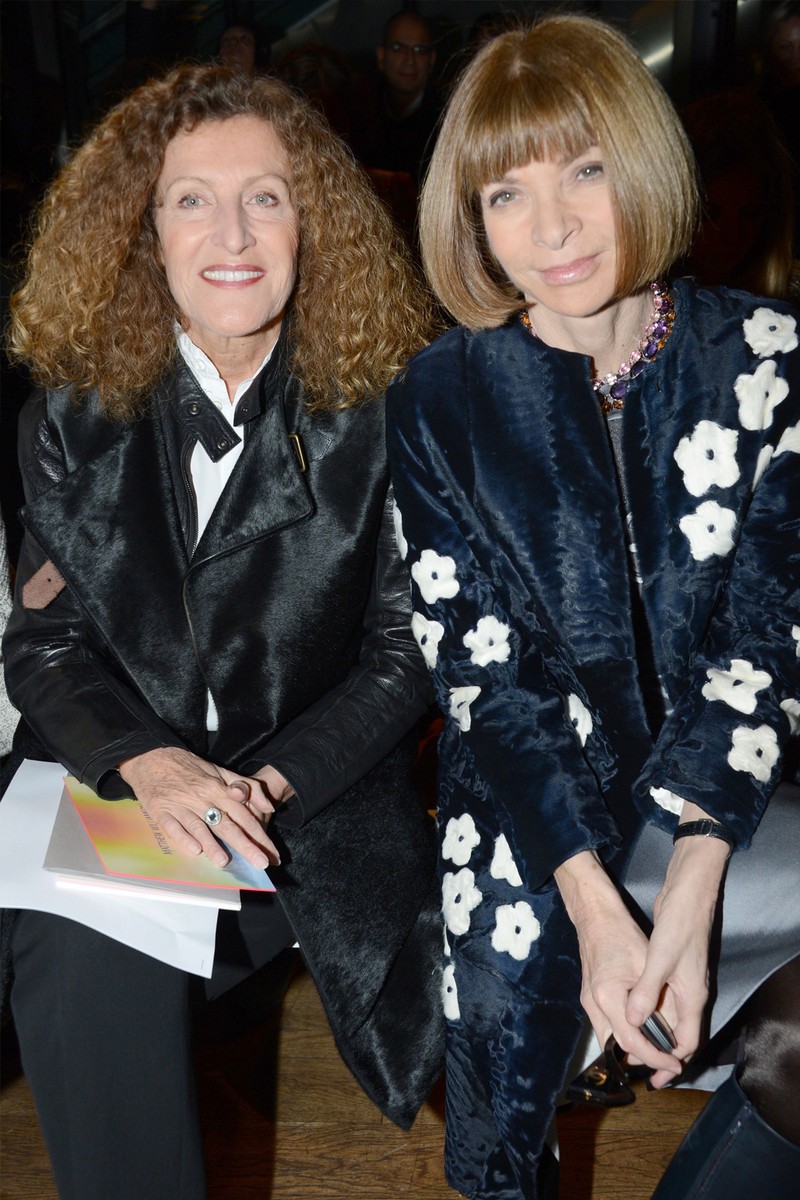
DISCLAIMER: We endeavour to always credit the correct original source of every image we use. If you think a credit may be incorrect, please contact us at info@sheerluxe.com.

